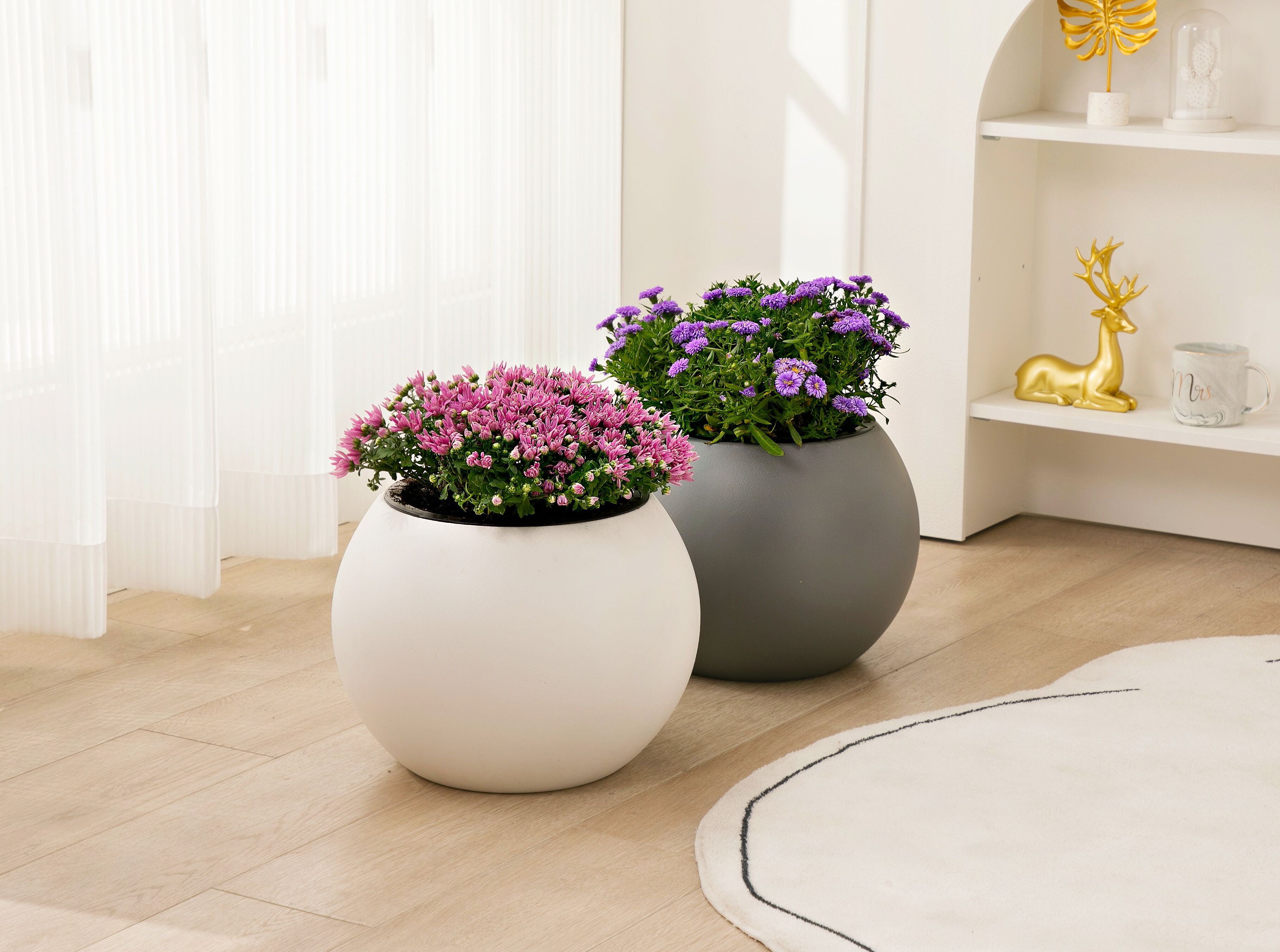Wholesale Tall Self-Watering Planters Manufacturer Factory
Tall self-watering planters have become increasingly popular among gardening enthusiasts and urban dwellers seeking to green space in limited areas. These planters combine functionality with aesthetic appeal, offering practical solutions for growing a variety of plants while reduce maintenance efforts.
Height and Stability
One of the primary design considerations for tall self-watering planters is their height and stability. Tall planters are designed to elevate plants, creating visual interest and making them suitable for showcasing larger or trailing plants. It's essential to choose planters with a sturdy base and adequate weight distribution to prevent tipping or instability, especially in outdoor settings exposed to wind or inclement weather.
Material Selection
Tall self-watering planters are available in various materials, each offering unique benefits in terms of durability, aesthetics, and functionality:
Plastic: Lightweight and affordable, plastic planters are easy to move and come in a range of colors and styles. They are suitable for both indoor and outdoor use but may require additional anchoring for stability in windy conditions.
Ceramic: Known for their aesthetic appeal, ceramic planters add elegance to indoor and sheltered outdoor spaces. They provide good insulation for plant roots but can be heavy and fragile, requiring careful handling.
Metal: Metal planters, such as those made from aluminum or steel, offer durability and a modern aesthetic. They are weather-resistant and suitable for outdoor environments but may conduct heat, requiring insulation for plant roots during hot weather.
Composite: Made from a blend of materials like wood fibers and recycled plastics, composite planters offer the look of natural materials with enhanced durability and weather resistance. They are lightweight and low-maintenance, making them ideal for various climates.
Watering System
The self-watering feature is a key design element of tall self-watering planters, contributing to efficient plant care and water conservation:
Reservoir Capacity: Planters should have an adequate reservoir size relative to the planter's height and plant needs. A larger reservoir allows for longer intervals between watering sessions, reducing maintenance efforts.
Wicking Mechanism: The wicking system typically consists of a wick or porous material that extends from the reservoir into the soil. This capillary action allows plants to absorb water as needed, maintaining consistent moisture levels without waterlogging the soil.
Overflow Prevention: Effective self-watering planters include mechanisms to prevent overflow and ensure proper drainage, preventing water from accumulating at the bottom of the planter and potentially causing root rot.
Drainage and Air Circulation
Proper drainage and air circulation are essential for plant health in tall self-watering planters:
Drainage Holes: Planters should have drainage holes or outlets to allow excess water to escape, preventing waterlogging and maintaining soil aeration.
Airflow: Adequate airflow around the plant roots promotes oxygen exchange and prevents soil compaction. Planters with raised feet or slatted bases facilitate airflow and drainage, especially in humid or rainy climates.
Aesthetic and Functional Integration
Tall self-watering planters should complement both indoor and outdoor environments, enhancing the overall aesthetic while meeting functional needs:
Design Versatility: Choose planters that harmonize with existing decor styles, whether modern, rustic, or traditional. Consider colors, textures, and finishes that blend seamlessly with surrounding furnishings and landscaping.
Modular Options: Modular planters allow for creative arrangement and flexibility in designing vertical gardens or green walls. They can be stacked or combined to space utilization and create visual interest.
Accessibility: Consider planters with built-in features for ease of use, such as integrated handles or wheels for mobility, especially in larger or heavier planters.



 EN
EN  English
English 中文简体
中文简体 Español
Español























 Companies adhere to the "let plants fall in love with appropriate plant hall, let green into the tens of thousands of people for the purpose"
Companies adhere to the "let plants fall in love with appropriate plant hall, let green into the tens of thousands of people for the purpose" Fansan industry zone, Shabu Town, Huangyan, Taizhou City, Zhejiang province, China
Fansan industry zone, Shabu Town, Huangyan, Taizhou City, Zhejiang province, China +86-15325615991
+86-15325615991 +86-0576-81109093
+86-0576-81109093 +86-0576-81109093
+86-0576-81109093 yizhitang001@gmail.com
yizhitang001@gmail.com